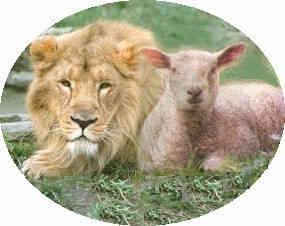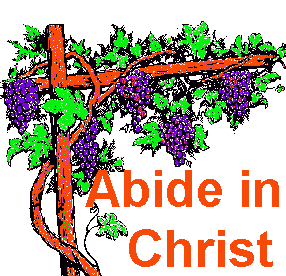You shall be holy for I
am holy.
Leviticus comes from the
Greek title of the third book in the Old Testament,
meaning "relating to the Levites." It is named after
the tribe of Levi. Actually it is more concerned
with the priests than with the Levites themselves.
The Hebrew title, Wayyiqra, is from the first
word in the book meaning "And He called."
AUTHOR:
is Moses who is spoken of fifty-six times as
receiving these words from the Lord. He either wrote
them down himself or dictated them (cf. 1:1; 4:1;
6:1, 24; 8:1; 11:1; 12:1, etc.). Jesus Christ
attested to Moses’ authorship in Mk. 1:44; cf. Lev.
13:49).
RECIPIENTS:
the nation of Israel (1:2).
DATE:
sometime before the wilderness wanderings probably
c. 1444 B.C. It is one month after pitching the tent
in the Sinai (Ex. 40:17) and the departure from
Sinai (Num. 1:1; 10:11).
THEME:
God is holy and His people must approach Him in
holiness (11:45).
PURPOSE:
The Talmud calls Leviticus the "Law of the Priests."
It explains how sinful man can approach a holy God
through His divine provision of a perfect sacrifice
(Lev. 11:45; 19:2; 20:26; Jn. 1:29).
KEY:
11:45 or 19:2; Heb. 9:22; John 1:29
PLACE:
The events in Leviticus take place at Mt. Sinai
(7:38; 25:1; 26:46; 27:34).
SACRIFICES:
were to impress upon Israel man’s sinfulness, and to
picture the coming of the Sacrifice of the Lamb of
God. Leviticus is God’s picture book and every
picture points to the work of Christ. The word
"sacrifice" occurs over forty times. "Priest" is
found 190 times. "Blood" is found eighty-six times,"
"holy" about eighty-seven times (about 152 times in
adjective, noun, and verbal forms), and "atonement"
forty-five times. Obviously this is the book about
sacrifices.
The great lesson from
Leviticus is the Holy God must have a holy people
and this holiness must embrace the whole life of
man. Why the need for animal sacrifices? Man is a
sinner. Every sacrifice in the Jewish sacrificial
system anticipated the true and perfect sacrifice
which Christ would offer when He came. They were
shadows of the coming perfect sacrifice for sin.
Christ is the end of all the sacrifices. These
sacrifices were a witness to the people that they
were sinners and could be saved only by
substitutionary death offered on their behalf. It
testified that they lived only by virtue of the
slain victim in their stead. Continual repetition of
the sacrifice testified that blood of animals could
never take away sin. It was a promise, a prophesy
and a pledge. The only cure for sin is the death of
Christ. These Old Testament sacrifices were
worthless in themselves, but were accepted for the
time as a token of the future sacrifice of the Lamb
of God (Heb. 10:10-14). Once that sacrifice was
offered, all other sacrifices lost their meaning,
for the infinite value of the Savior’s death was
enough to pay the penalty for the sin of all men for
all times (Heb. 10:18).
TYPES IN OLD TESTAMENT
John R. Sampey wrote, "A
type may properly be defined as a person,
institution, or event in the old dispensation which
was designed to prefigure a corresponding person,
institution, or event in the New." None of the
institutions and ceremonies in the Old Covenant were
able to save. They were devised as types of Christ
and the different phases of effectual salvation as
demonstrated in the book of Hebrews (chaps. 7-10).
Hebrews is the best commentary on Leviticus. Indeed,
the New Testament refers to Leviticus ninety times.
The priests and sacrifices were intended to point
the way to the "Lamb of God" who in the fullness of
time offered the only sufficient sacrifice for sin.
Everything under the Old
Covenant typified what God would do in the person of
Jesus Christ. The land was a type of the salvation
to come through Christ. The covenant people were a
type of the New Testament people of faith. The
Offerings, Feasts, and Ceremonies all typified
redemption through the messiah and the life of the
redeemed. The Tabernacle typified the places and the
manner in which JHVH met with his people and dealt
with their sins. It was a type of the Incarnate
Christ and His ministry for men. The priesthood
typified the place and manner in which JHVH met with
His people and dealt with their sins.
PRINCIPAL TYPES IN
LEVITICUS
Burnt Offering
(1:1-17) is the consecration of the entire offering
to God. Christ offered Himself without spot
typifying perfect surrender (Matt. 26:39-44; Mk.
14:36; Lk.22:42; Phil. 2:5-11), and the believer
(Rom. 12:1-2; Heb. 13:15).
Meal or Meat
Offering (2:1-16) symbolized
thanksgiving and devotion. Christ in His human
perfection was tested by suffering typifying
service. Cf. Sinlessness of Christ (Heb. 4:15; I Jn.
3:5).
Peace Offering
(3:1-17) symbolizes peace with God between God and
the sinner. Christ is our Peace. He is our serenity
(Rom. 5:1; Col.1:20).
Sin Offering
(4:1-35) is the compulsory offering for the
expiation of sin. Christ alone atoned for the guilt
of our sin. He is our divine substitute (II Cor.
5:21; Heb. 13:11-13).
Trespass Offering
(5:1-19) cleanses the conscience of specific sins.
Christ perfect cleansing for sin. He is our
satisfaction (Col. 2:13).
Day of Atonement
(16:1-34) is the perfect cleansing and restoration
by our great High Priest.
Passover
(23:4-5) is the celebration of God passing over
Israel and judging Egypt. The lamb symbolized the
blood of Christ is our Passover who takes away the
sins of the world.
Unleavened Bread
(23:6-8) symbolizes our communion with Christ.
Firstfruits
(23:9-14) represents Christ’s resurrection from the
dead. He was the first to rise from the dead. When
Christ comes a second time the harvest of the whole
field will take place.
HOLY DAYS OF ISRAEL
Clyde Francisco suggests
the holy days of the of the Hebrews were symbols:
the Sabbath of God as Creator, the Passover of God
as Redeemer, Pentecost and Tabernacles of God as
Provider, and the Day of Atonement of God as holy
and gracious.
Series of studies on
Christ in the Old Testament
Title: Introduction to
Leviticus
Series:
Introduction to Bible Books



